| |||||
| Centuries: | |||||
|---|---|---|---|---|---|
| Decades: | |||||
| See also: | List of years in Portugal | ||||
Events in the year 1875 in Portugal . There were 455,000 registered voters in the country. [1]
| |||||
| Centuries: | |||||
|---|---|---|---|---|---|
| Decades: | |||||
| See also: | List of years in Portugal | ||||
Events in the year 1875 in Portugal . There were 455,000 registered voters in the country. [1]
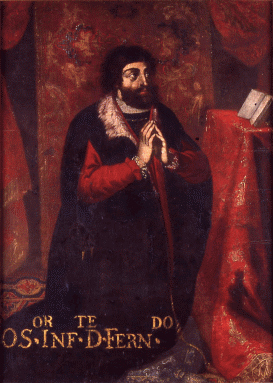
Infante Ferdinand, Duke of Viseu and Beja was the third son of Edward, King of Portugal and his wife Eleanor of Aragon.

Infante Francisco, Duke of Beja was a Portuguese infante (prince) son of Peter II, King of Portugal, and his second wife, Maria Sofia of the Palatinate.
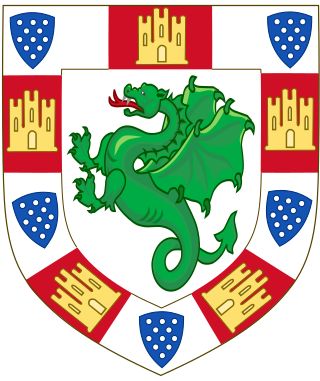
Infante Fernando of Portugal, or Ferdinand in English, was a Portuguese infante (prince), son of King Afonso II of Portugal and his wife Urraca of Castile, daughter of Alfonso VIII of Castile.

Dom José, Prince of Brazil, Duke of Braganza was the heir apparent to the Kingdom of Portugal until his death in 1788, as the eldest child of Queen Dona Maria I of Portugal and King Dom Pedro III of Portugal, members of the House of Braganza.
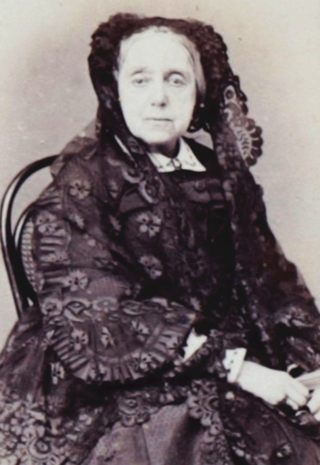
Infanta Maria Teresa of Braganza was the firstborn child of John VI of Portugal and Carlota Joaquina of Spain. From 1828 to 1834, she was heiress presumptive to the Portuguese throne.
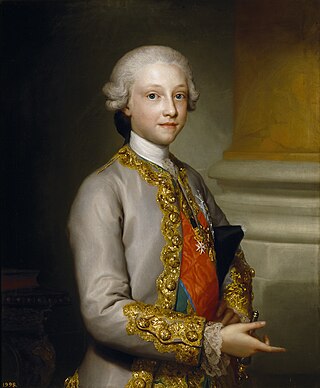
Infante Gabriel of Spain was a son of King Charles III of Spain and his wife Maria Amalia of Saxony.

Mariana Victoria of Portugal was a Portuguese Infanta (princess), the eldest daughter of Queen Maria I of Portugal and her king-consort, Infante Pedro of Portugal.

Mafalda of Portugal was a Portuguese infanta, the fourth legitimate child and third daughter of Afonso Henriques and his wife Mafalda of Savoy.
Infante Carlos of Portugal was a Portuguese infante, the fourth child of King John V of Portugal and his wife Maria Anna of Austria.

Maria da Conceição Infante de Lacerda Pereira de Eça Custance O'Neill was a Portuguese writer, poet, journalist, and spiritualist of Irish descent.
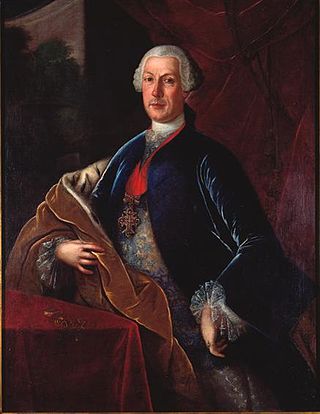
Infante António of Portugal was a Portuguese infante (prince), the third surviving son of Peter II, King of Portugal, and his wife Maria Sophia of Neuburg.

The Pantheon of the House of Braganza, also known as the Pantheon of the Braganzas, is the final resting place for many of the members of the House of Braganza, located in the Monastery of São Vicente de Fora in the Alfama district of Lisbon, Portugal. The pantheon's burials have included Portuguese monarchs, Brazilian monarchs, a Romanian monarch, queen consorts of Portugal, and notable Infantes of Portugal, among others.
Infante Alexandre of Portugal was a Portuguese infante, the sixth and last child of King John V of Portugal and his wife Maria Anna of Austria.
Events in the year 1899 in Portugal.
Events in the year 1896 in Portugal.
Events in the year 1892 in Portugal.
Events in the year 1890 in Portugal. There were 951,000 registered voters in the country.
Events in the year 1886 in Portugal.
Events in the year 1879 in Portugal.
Events in the year 1859 in Portugal.